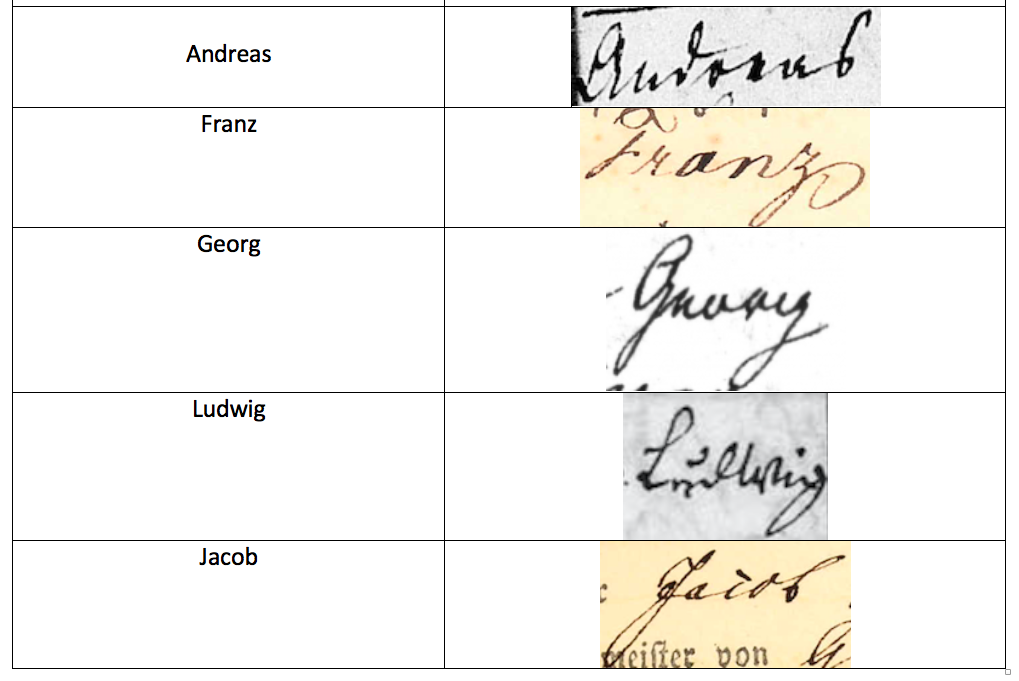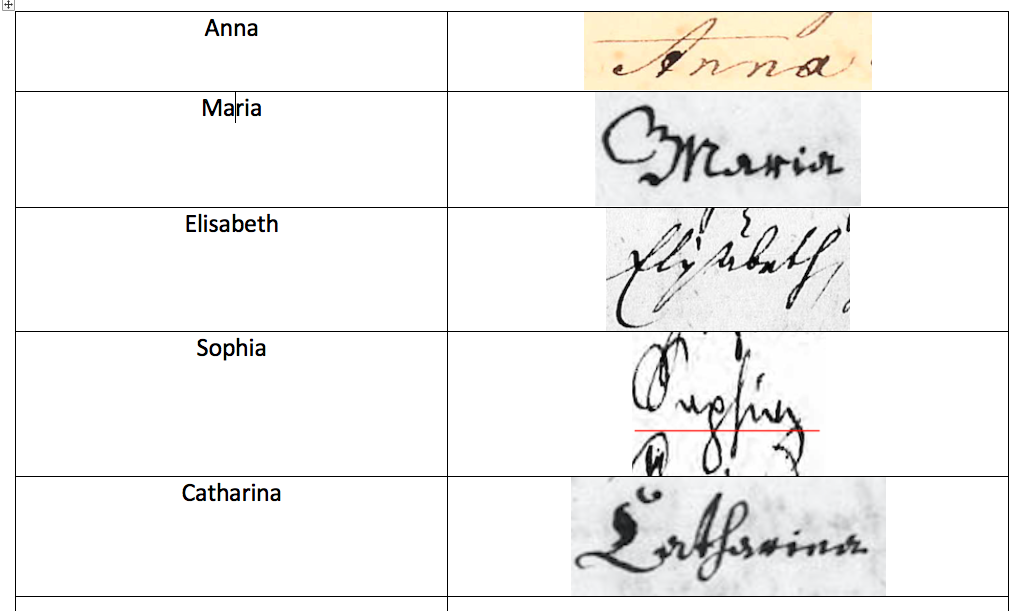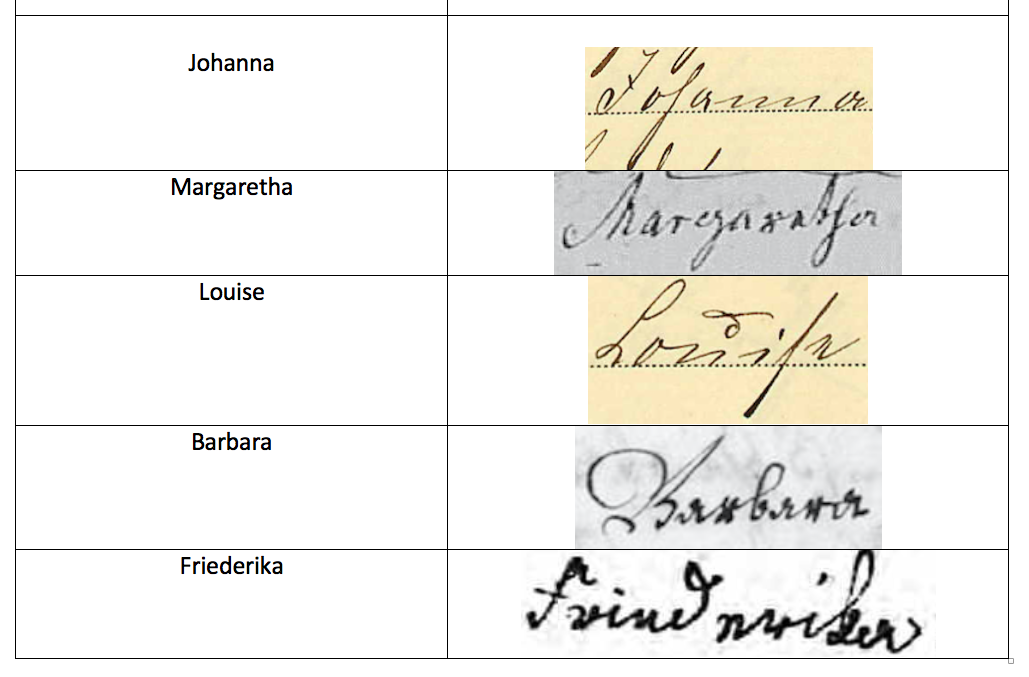
Names, along with dates, are a genealogist’s treasure. Yes, they are the key to filling in our family trees, but they are also much more than that. Names are windows to the past, providing us with hints of the person our ancestor could have been, offering us a small glimpse into his or her life. But alas, as with many things in German genealogy, these names are often written in the old German script – and thus hard to decipher.
In cases like these, it often helps to be familiar with what kind of names you may come across. Our German ancestors weren’t always the most creative in naming their children – names were supposed to have meaning, after all – and thus the same names tend to pop up again and again in German genealogical documents. If you are familiar with what these common names are, deciphering your ancestor’s name becomes that much easier. Below, I’ve compiled tables for you of the ten most common boys’ names and ten most common girls’ names in German genealogy (in my translating experience). I’ve also included real-life samples of how these names could look – but remember, everyone’s handwriting was different, so your ancestor’s name may be a slight variation on the name provided below. And finally, make sure to read to the bottom for three more tips about names!
Boys’ Names
Girls’ Names
Three More Tips
- Names were sometimes written in the “normal” Latin script (the script we use) instead of the old German handwriting. You may have a document that’s written entirely in the old German script, but with your ancestor’s name written in a script that looks like our modern cursive. In that case, deciphering it should be no problem – as long as you’re older than ten years old (I’ve heard they’ve stopped teaching cursive in schools! Will our cursive become a thing of the past as well?)
- If you see a name underlined in your document, that means that this name was the Rufname, or the name your ancestor was called. Below, the child listed is “Johann Gottfried”. As “Gottfried” is underlined, this would have been the name his family called him.
- If there is a straight line above an “n” or an “m”, this means that you should double that letter. For example, the name below is written “Johan Gottfried”, with a straight line above the “n”. Since the straight line means that you should double the “n”, the name is therefore “Johann Gottfried.”
Do you have a favorite name in German genealogy? I’d love to here. Let us know in the comments below.






9 Responses
It might be worth adding that a straight line above m or n doubles the letter, as seen in Johann above (also often see in Anna)
Yes, good point! Something I always say in my presentations, but forgot to mention here. Thank you!
I have several German ancestral families in which all the children had the same first name and then went by their middle names. Johann and Anna seemed to be very popular first names if a family chose this naming convention.
Hi Kimberly,
Yes, that was very common! So many Johanns and Annas in the past – makes it tricky for us!
Hi Katherine,
Have you ever come across the male name Alvil or Alwill? I have never seen this before and don’t know what to make of it. Not sure if it is German, or maybe Hungarian, or something else. Not sure of the meaning or derivation, either. Thank you.
I haven’t come across that one! I did a quick Google search and it doesn’t seem to be too common either…
yes! so many of those you’ve listed! My family also has lots of Wilhelmina as first or middle names. and Otto for the men.
Love it!
Hi, I’ve found records showing married couples having the same first name…Friedrich and Friedricka, Johann and Johanna, as two examples. There are no middle names listed, or if there are, it’s on a birth certificate where the mother and child have exactly the same names. Is there a reason for this or is this usual/common? Its causing me a headache for sure! Thanks!